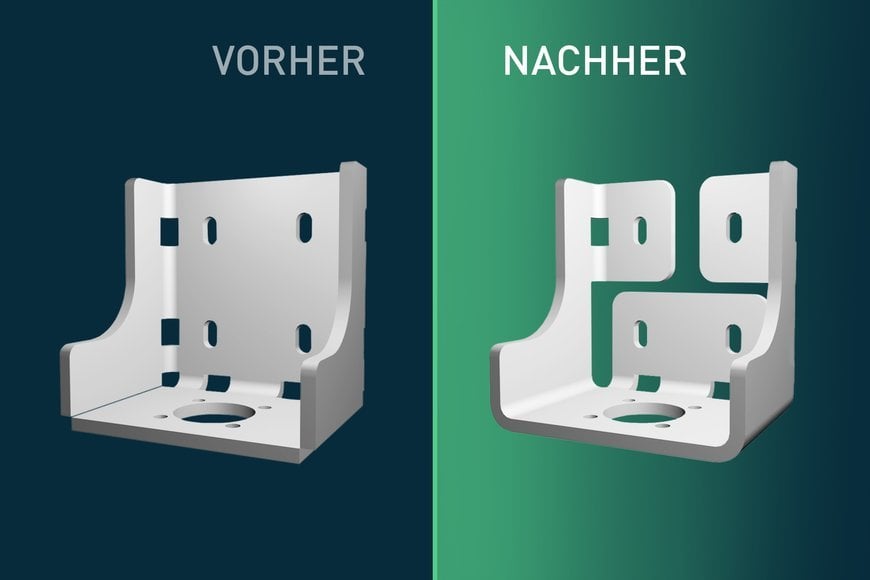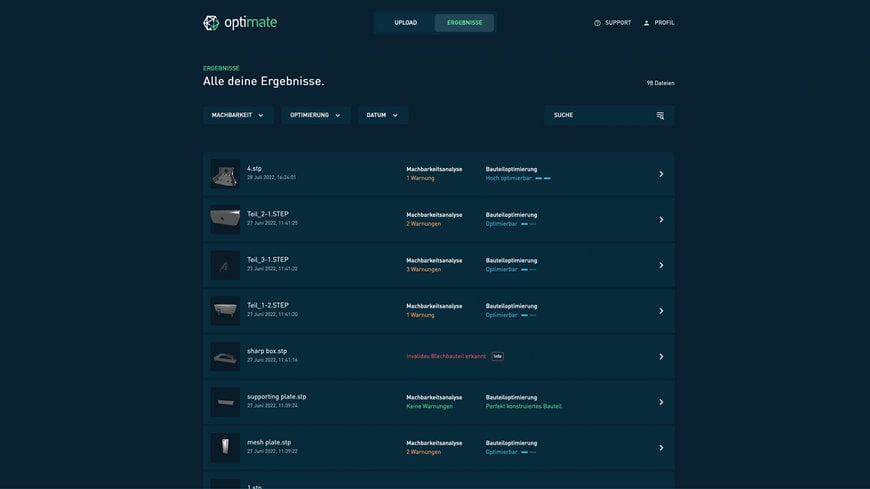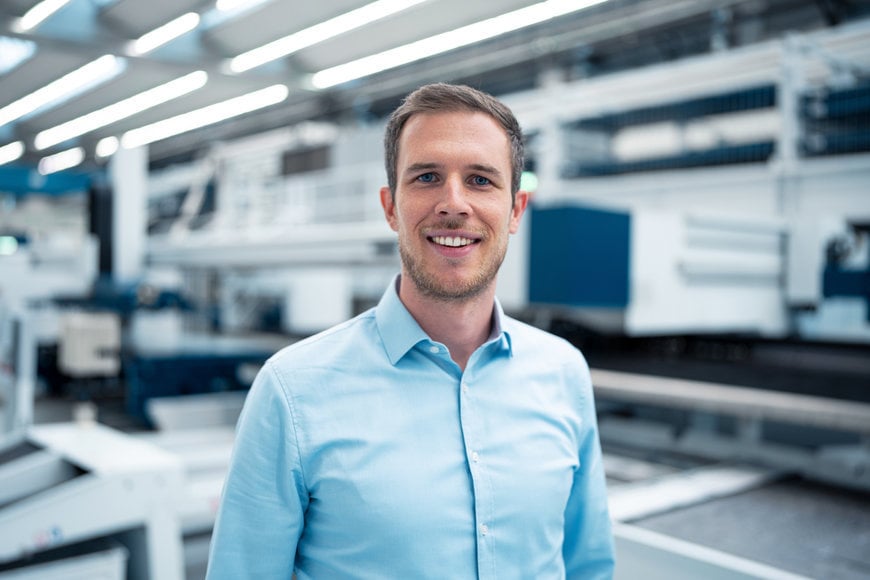www.industryemea.com
24
'22
Written on Modified on
Optimate: Sheet metal processing on the path to Industry 4.0
Feasibility analysis, potential recognition and part optimization for sheet metal processing via web app.

Optimate, a start-up spun off from TRUMPF in 2020, has set itself the goal of guaranteeing more pro- cess reliability in sheet metal processing. With Stuttgart-based Op- timate, it all begins with the part. In this interview, CEO & Co- Founder Jonas Steiling discusses feasibility analysis, part optimi- zation and the sustainable support of the digitization process in sheet metal processing.
Mr. Steiling, first of all, what does Optimate has to offer the sheet metal processing sector on the path to Industry 4.0 and Smart Factory?
JS: In one sentence: a cloud-based solution for analyzing and optimizing sheet metal parts with the aim of improving design plans and reducing costs.
How would you describe your approach?
JS: The designer plays a major role in determining a product’s manufac- turing costs. With this in mind, we want to be involved as early as possi- ble in the product development process and provide support during the design phase. The primary goal is always to ensure a part’s process re- liability. In other words: What use is it, if the entire production process is optimized and automated regarding Industry 4.0 and Smart Factory, but the parts can’t be manufactured?

The uploaded sheet metal part is always at the heart of the App. Users can transparently track their part in each subsequent step.
And how does your cloud-based solution work?
JS: It’s basically very simple. The user logs in via our App and can im- mediately upload the parts they want to analyze. Our cloud solution cur- rently accepts the widely used STEP format, as well as native Solid- Works formats. In the basic version of the App, the feasibility analysis and potential recognition are available. The feasibility analysis is aimed at ensuring process-reliable manufacturing. The potential recognition en- ables the user to find the parts for which we have identified optimization potential in just a few seconds. A specially developed machine learning model was trained together with design experts and thousands of parts data. With over 92% accuracy, recognizing potential is the first step of our analysis.
Can you give us an example of this?
JS: Let’s take a simple mesh plate where one leg was designed too short. Manufacturing it on a bending machine would cause problems. If you upload this part to our App, the feasibility analysis immediately displays a warning that the part cannot be bent in a way that is process-reliable. Also, the corresponding position is color-coded in the 3D view of the part.
And what do designers or work preparation personnel then do with this information?
JS: This, too, is virtually child’s play: With just one click, the undercut flange length is adjusted to the minimum required dimension. This design suggestion can be downloaded as a STEP file and transferred directly to the CAD program.

Jonas Steiling, CEO of Optimate GmbH: “With TRUMPF – the leader in sheet metal processing – as our parent company, we see it as our responsibility to deliver excellence.”
How does the App ensure that only suggestions are offered for which production equipment is available?
JS: The question is legitimate, because what good is the best suggestion if the necessary bending tools are not available? This is why we have already stored commonly used machine data and toolsets. If required, and in consultation with our experts, the sheet metal worker’s toolset can also be entered initially into the customer’s profile.
Especially long-time sheet metal workers would have the knowledge to recognize and eliminate such design errors, wouldn’t they?
JS: Certainly, there are highly experienced sheet metal experts who see a potentially problematic part and know that it cannot be manufactured. However, such experts are a rare commodity these days and are becom- ing fewer and fewer. Also, the design of sheet metal parts is becoming more and more complex. We are seeing an increasing number of vari- ants with smaller production volumes. This also means that the designer always needs to have many guidelines and strategies in mind. With Op- timate, we now have the right tool to support them.
Let’s assume that the Optimate App has uncovered optimization poten- tial. What happens next for the user?
JS: This is a very exciting topic: We are currently implementing the option of an automatic redesign – we call it ‘Automated Optimization’. For this purpose, the previously uploaded 3D graphic is converted into a 2D rep- resentation, and the individual surfaces are displayed in relation to the neighbouring surfaces. On this base, alternative design suggestions are generated. If, for example, an originally planned weld seam is omitted due to an alternative bending step, the necessary cuts are designed au- tomatically at the same time. Our App also immediately outputs the cor- responding unfolding with the respective material optimization. The data record of the redesigned part is instantly available for download with a simple mouse click.
In your experience, is the tool only used for newly designed sheet metal parts?
JS: No, not exclusively. Increasingly, our customers are also optimizing parts that have already been manufactured for several years and caused unnecessary additional costs. After all, saving one cost-intensive weld seam can quickly save as much as 40% of the manufacturing costs.
This sounds like the perfect digitization solution for sheet metal pro- cessing.
JS: Our optimization solution is unique on the market so far and we are taking on a pioneering role in the digitization of sheet metal part design. Along the way, however, we can’t afford to neglect the many additional benefits. Optimized production saves machine hours and personnel ca- pacity. If entire work steps, such as cost- and time-intensive welding, are eliminated or material waste is minimized, this also leads to a reduction in CO2 and contributes to climate neutrality.
www.optimate.com

